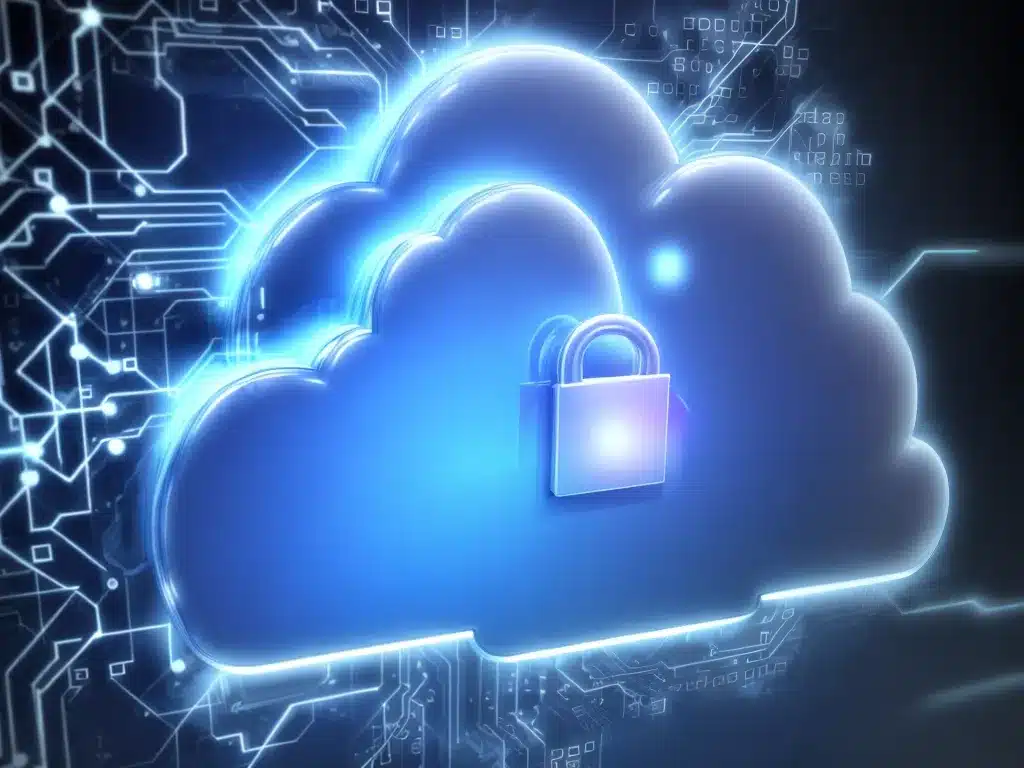In the modern digital age, cloud computing has become ubiquitous. As more and more data is stored in the cloud, data security has become a major concern. Cloud security refers to protecting data stored in cloud computing environments. In this article, I will explore the following aspects of cloud security in depth:
How Secure Are Cloud Environments?
The three main cloud computing models each have their own security implications:
Infrastructure as a Service (IaaS)
With IaaS, the cloud provider manages the physical infrastructure and virtualization, while the customer manages everything else including the operating system, applications, and data. The customer retains more control over security with IaaS. However, the cloud provider is still responsible for physical security and virtualization security.
Platform as a Service (PaaS)
PaaS provides a cloud platform for customers to deploy applications without needing to manage the underlying infrastructure. The cloud provider manages the operating system, virtualization, servers, storage, and networking. The customer only manages the applications and data. More responsibility for security falls on the cloud provider with PaaS.
Software as a Service (SaaS)
SaaS offers complete software solutions running in the cloud. Customers only need to manage their data while everything else is managed by the cloud provider. With SaaS, the cloud provider has the bulk of the responsibility for security measures.
While cloud providers implement robust security, customers share responsibility. Cloud security requires defense-in-depth with security controls at every layer.
Cloud Security Threats and Vulnerabilities
Using the cloud introduces new attack surfaces and vulnerabilities including:
- Data breaches – An unauthorized user accessing and stealing data.
- Hijacking of accounts – Attacks gaining access to valid user accounts.
- Denial of service (DoS) – Flooding systems to make resources unavailable.
- Malware infections – Malicious software compromising systems and data.
- Insufficient due diligence – Cloud providers not meeting security standards.
The main cloud security threats are data breaches, hijacking of accounts, malware infections and DoS attacks. Customers must understand these risks and work closely with providers on security strategy.
How Customers and Providers Share Responsibility
Cloud security is a shared responsibility between the provider and customer. The division of responsibilities depends on the cloud model:
-
For IaaS, the cloud provider secures the physical infrastructure and virtualization while the customer handles everything else.
-
For PaaS, the provider secures the infrastructure, operating system and platform while the customer secures their data and applications.
-
For SaaS, the provider handles most security while the customer handles their data and identity/access management.
It’s crucial to understand the shared responsibility model based on the specific cloud model and service. Cloud providers offer security tools and features customers can use like encryption and network security groups. But customers must properly configure and use them.
Key Cloud Security Best Practices
Adopting sound cloud security practices is essential. Here are some key best practices:
-
Enable multi-factor authentication (MFA) – Reduces account hijacking by requiring multiple methods of authentication.
-
Use role-based access controls (RBAC) – Restrict user permissions to only allow required access.
-
Encrypt sensitive data – Render data unreadable to unauthorized access.
-
Regularly update systems – Patch vulnerabilities through regular system updates.
-
Implement strong password policies – Enforce complex passwords that are regularly changed.
-
Use cloud security tools – Leverage tools like firewalls, intrusion detection and prevention systems.
Following security best practices, ensuring proper configuration, and regularly reviewing settings is key for cloud security.
Real World Examples of Cloud Security Incidents
Unfortunately, breaches and outages still occur even in the most secure cloud environments:
-
The Capital One breach in 2019 resulted in over 100 million customer records being stolen from a misconfigured cloud storage service.
-
Hackers gained access to Ring home security camera systems after the company failed to require proper authentication on devices.
-
An outage of Google Cloud in 2019 brought down YouTube, Gmail, Nest and other services for several hours.
These examples highlight the need for proper configuration, authentication practices, and redundancy to minimize disruptions. No system is 100% secure, but risks can be drastically reduced with sound security strategies.
Cloud Security Monitoring and Auditing
Continuous monitoring and auditing of cloud environments is essential:
-
Monitor network traffic for abnormal patterns that could indicate intrusions.
-
Audit configurations and settings to ensure proper policies are enforced.
-
Log user activity to identify unauthorized access attempts.
-
Perform penetration testing to find potential weaknesses before attackers do.
-
Review provider security certifications and audits for assurance of compliance.
Vigilant security monitoring and auditing is required in the dynamic cloud landscape. Customers and providers must both regularly assess security posture.
Conclusion
Migrating data storage, applications or infrastructure to the cloud can provide substantial benefits. But it also requires heightened attention to security. With deliberate security measures, proper configurations, and shared responsibility between provider and customer, cloud environments can offer robust data protection. However, no solution is completely immune to breaches. Staying vigilant, monitoring cloud security, keeping systems patched and updated, and following best practices will help keep your data safe in the cloud.












